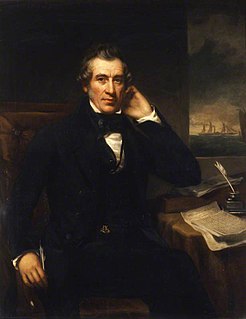Related Research Articles

Arthur Edwin Kennelly was an American electrical engineer.

Sir James Alfred EwingMInstitCE was a Scottish physicist and engineer, best known for his work on the magnetic properties of metals and, in particular, for his discovery of, and coinage of the word, hysteresis.

Sir William Fairbairn, 1st Baronet of Ardwick was a Scottish civil engineer, structural engineer and shipbuilder. In 1854 he succeeded George Stephenson and Robert Stephenson to become the third president of the Institution of Mechanical Engineers.
William Pole FRS FRSE MICE was an English engineer, astronomer, musician and an authority on Whist.

Sir Charles Edward Inglis, was a British civil engineer. The son of a doctor, he was educated at Cheltenham College and won a scholarship to King's College, Cambridge, where he would later forge a career as an academic. Inglis spent a two-year period with the engineering firm run by John Wolfe-Barry before he returned to King's College as a lecturer. Working with Professors James Alfred Ewing and Bertram Hopkinson, he made several important studies into the effects of vibration on structures and defects on the strength of plate steel.

The Telford Medal is a prize awarded by the British Institution of Civil Engineers (ICE) for a paper or series of papers. It was introduced in 1835 following a bequest made by Thomas Telford, the ICE's first president. It can be awarded in gold, silver or bronze; the Telford Gold Medal is the highest award the institution can bestow.

A skew arch is a method of construction that enables an arch bridge to span an obstacle at some angle other than a right angle. This results in the faces of the arch not being perpendicular to its abutments and its plan view being a parallelogram, rather than the rectangle that is the plan view of a regular, or "square" arch.

William Ripper CH (1853–1937) was principal of Sheffield Technical School when it merged with other institutions to create the University of Sheffield, and he was acting vice-chancellor of the university from 1917 to 1919.

Peter Nicholson was a Scottish architect, mathematician and engineer. Largely self-taught, he was apprenticed to a cabinet-maker but soon abandoned his trade in favour of teaching and writing. He practised as an architect but is best remembered for his theoretical work on the skew arch, his invention of draughtsman's instruments, including a centrolinead and a cyclograph, and his prolific writing on numerous practical subjects.

Oliver Byrne was a civil engineer and prolific author of works on subjects including mathematics, geometry, and engineering. He is best known for his 'coloured' book of Euclid's Elements. He was also a large contributor to Spon's Dictionary of Engineering.

George Leonard Vose was a United States civil engineer and Professor of Civil Engineering at Bowdoin College and Massachusetts Institute of Technology, known as educator in the field of railroads, and from his "Manual for railroad engineers and engineering students" (1873).

Thomas Tredgold (1788–1829) was an English engineer and author, known for his early work on railroad construction. His definition of civil engineering formed the basis of the charter of the Institution of Civil Engineers.
Campbell R. Middleton ( ) is the Laing O'Rourke Professor of Construction Engineering at the University of Cambridge, and director of the Laing O’Rourke Centre for Construction Engineering & Technology in the Cambridge Department of Engineering.
Angus Robertson Fulton (1871–1958) was a Scottish Engineer and Academic who served as 'Interim' Principal of University College Dundee for seven years.

Hugo Diemer was an American engineer, management consultant, and professor at the Penn State University, who in 1910 published the first industrial engineering textbook: Factory Organization and Administration.

Sir Thomas Hudson Beare FRSE RSSA was an eminent British engineer. He was successively Professor of Engineering at Heriot-Watt University, Edinburgh, at University College, London, and finally Regius Professor of Engineering in Edinburgh University.

Herbert William Charles Kempton Dyson, M.I.Struct.E. (1880–1944), known professionally as H. Kempton Dyson, was an English structural engineer, civil engineer, architect, editor and author who specialised in reinforced concrete structures. He was a founder member and the first permanent secretary of the Concrete Institute, which became the Institution of Structural Engineers. He designed the Central Bandstand, Herne Bay in 1924.
Ewing Matheson was a British civil engineer, consulting engineer, managing director of the Farnley Iron Company, and author, known for his early works on factory management and cost accounting.
Nicholas Procter Burgh (1834–1900) was a British marine engineer, known for his work on marine engines, marine engineering, screw propulsion, boilers and boiler-making, and the indicator diagram.
Ira Osborn Baker was an engineering professor at the University of Illinois and author.
References
- ↑ "Members, Recent Deceases". Minutes of Proceedings of the Institution of Civil Engineers. 204: 438. 1917.
- 1 2 Thomas Claxton Fidler, University of Dundee, Scientists at Dundee
- ↑ "Fidler, Prof. T. Claxton". Who's Who: 744. 1916.
- ↑ Fidler, T. Claxton (1909). "On the application of mathematics to the theory of construction" (PDF). In G. Castelnuovo (ed.). Atti del IV Congresso Internazionale dei Matematici (Roma, 6–11 Aprile 1908). Vol. 3. pp. 356–360. hathitrust link